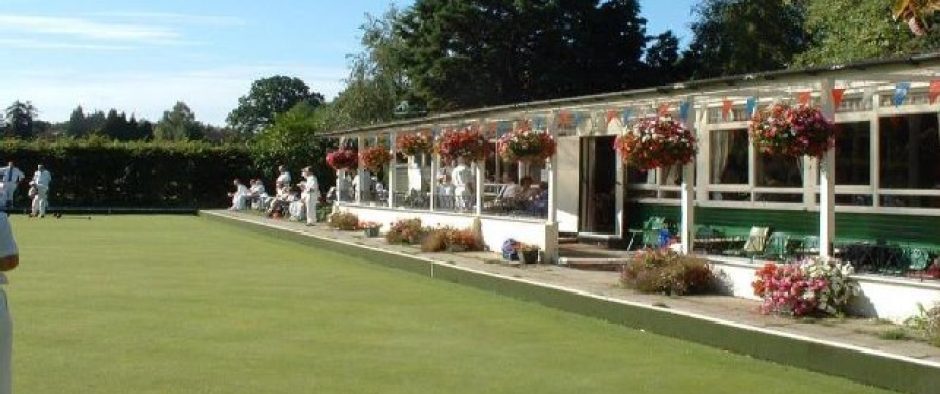Green: a flat playing area usually grass outdoor and synthetic indoor.
Dimensions: Length 31-40m Outdoor / 34-40m Indoor. Divided playing areas on green are called rinks. Rink width 4.3-5.8m Outdoor / 4.6-5.8m Indoor. Vertical white lines indicate the width of rink at both ends of green. A central rink indicator is also shown with the addition of a rink number.
Ditch: Surrounding area of green. Dimensions: min 200mm / max 380mm wide;
min 50mm / max 200mm deep. Top of bank min 230mm above green level.
Rules
Mat: to be placed with leading edge min 2m / max 25m from ditch edge. Minimum 2m and maximum 25m markers are shown as vertical white lines on both sides of the green. Sticks measuring 2m are used for accuracy when competitions are played.
Jack: must be cast min 23m from leading edge of mat. If the jack in its original course comes to rest less than 2 metres from the front ditch or is cast short or runs outside the confines of the rink (including ditch), it is illegal. The jack is now given up to the opposition to cast, the opposition may move the mat if so desired. If the jack is cast illegally for a second time it must be placed at the maximum distance (2m from ditch edge). A 2m measuring stick is used when competitions are played. The first bowler may now move the mat if so desired.
Bowl: must be delivered min 14m from front edge of mat and finish within the confines of the rink (including ditch) to be live. All failing bowls are dead and must be removed from the green. However, a travelling bowl (the one that has just been delivered) is classed as a ‘toucher’ if it hits the jack (a toucher is marked using chalk). If a toucher lands in the ditch it is still ‘live’ and remains in play. If the jack is hit into the ditch it is also still ‘live’. Ditch markers are placed on the bank of the ditch to indicate where the bowl and/or jack lay.
Rebounding Jack and/or bowl: a jack driven against the ditch bank that rebounds back onto the rink remains in play as long as it is at least 20m from the front edge of the mat. A bowl that has touched the jack and rebounds back onto the rink remains live if it is at least 14m from the front edge of the mat. A bowl that has not touched the jack and rebounds back onto the rink is dead and removed from play. If a non-touching bowl rebounds back onto the rink and displaces a live bowl or jack, the live bowl or jack must be replaced as near to its original resting point by the opponents and the dead bowl removed from play.
Displaced Bowls and Jack: if bowls and/or jack are displaced while at rest by a player, various actions may be undertaken. The opposition skip will decide the course of action to be taken. The general options are: (a) restore the bowls/jack as near to their original positions (b) leaving the bowls/jack where they rest (c) declaring the end ‘dead’ and replaying it. The Laws for displaced bowls and jack can be complex. Refer to an official rule book for further information.
Dead End: if the jack is displaced by a bowl and ends up outside the confines of the rink (side lines), the end is considered dead. The end must be played again. An agreement can be made to play from either end of the rink.
Tied End: when all bowls have been delivered and the head is concluded, if two opposing bowls are locked onto the jack the end is tied and no score is given. The end counts and is not played again. The score card is marked as a zero (0) for each team.
Trial Ends: are played at the beginning of a competition. Players will gain valuable information as to how quick or slow the green is playing. How wide or narrow that rink is playing. What hand you may favour to play your bowls, backhand/forehand. If you are playing away on an unfamiliar green you can gain valuable information by learning from your opposition, what hand they favour etc. You can elect to play four bowls for a trial end if you wish. You can even choose to play two woods from different sets, but only one full set can be used to play a game.
